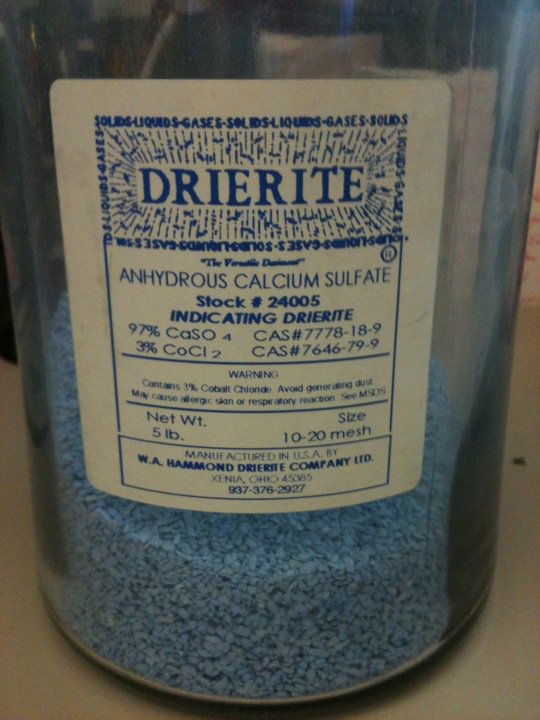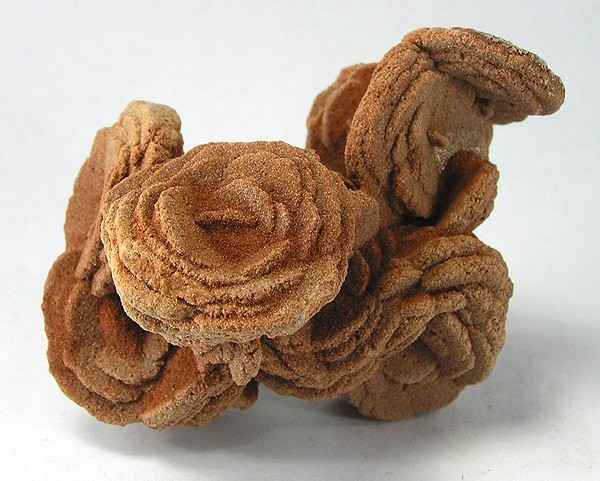|
Gypcrust
Gypcrete or gypcrust is a hardened layer of soil, consisting of around 95% gypsum (calcium sulfate). Gypcrust is an arid zone duricrust. It can also occur in a semiarid climate in a basin with internal drainage, and is initially developed in a playa as an evaporate. Gypcrete is the arid climate's equivalent to calcrete, which is a duricrust that is unable to generate in very arid climates. Composition Gypcrust horizons can be up to thick with a 75–97% gypsum (CaSO4∙2H2O) content. The majority of gypsum-rich layers occur where the average annual rainfall is less than 250 mm because gypsum is moderately soluble (c. 2.6 g−1 at 25 °C) and is normally leached out under higher rainfall conditions. Gypsum cements are rarely, if ever, as strong as calcretes or silcretes. Formation Gypcrust forms in a manner similar to that of caliche, which is composed of calcium carbonate Calcium carbonate is a chemical compound with the chemical formula . It is a common ... [...More Info...] [...Related Items...] OR: [Wikipedia] [Google] [Baidu] |
Duricrust
Duricrust is a hard layer on or near the surface of soil. Duricrusts can range in thickness from a few millimeters or centimeters to several meters. It is a general term (not to be confused with duripan) for a zone of chemical precipitation and hardening formed at or near the surface of sedimentary bodies through pedogenic or non-pedogenic processes. It is typically formed by the accumulation of soluble minerals deposited by mineral-bearing waters that move upward, downward, or laterally by capillary action. It is commonly assisted in arid settings by evaporation.Dixon, J.C. and McLaren, S.J., 2009. ''Duricrusts''. In A.J. Parsons and A.D. Abrahams, ed., pp. 123-151. ''Geomorphology of desert environments.'' Springer, Dordrecht. Woolnough, W.G., 1930. ''The influence of climate and topography in the formation and distribution of products of weathering.'' ''Geological Magazine'', 67(3), pp.123-132. There are different types of duricrusts, each distinguished by a dominant mineralo ... [...More Info...] [...Related Items...] OR: [Wikipedia] [Google] [Baidu] |
Calcrete
Caliche () is a soil accumulation of soluble calcium carbonate at depth, where it precipitates and binds other materials—such as gravel, sand, clay, and silt. It occurs worldwide, in aridisol and mollisol soil orders—generally in arid or semiarid regions, including in central and western Australia, in the Kalahari Desert, in the High Plains of the western United States, in the Sonoran Desert, Chihuahuan Desert and Mojave Desert of North America, and in eastern Saudi Arabia at Al-Hasa. Caliche is also known as calcrete or kankar (in India). It belongs to the duricrusts. The term is borrowed from Spanish and is originally from the Latin word , meaning lime. Caliche is generally light-colored but can range from white to light pink to reddish-brown, depending on the minerals present. Caliche is a mark of older landscapes. It generally occurs on or very near the surface. Where caliche layers originate at some depth from the soil surface, intact landscapes and buried landsca ... [...More Info...] [...Related Items...] OR: [Wikipedia] [Google] [Baidu] |
Soil
Soil, also commonly referred to as earth, is a mixture of organic matter, minerals, gases, water, and organisms that together support the life of plants and soil organisms. Some scientific definitions distinguish dirt from ''soil'' by restricting the former term specifically to displaced soil. Soil consists of a solid collection of minerals and organic matter (the soil matrix), as well as a porous phase that holds gases (the soil atmosphere) and water (the soil solution). Accordingly, soil is a three- state system of solids, liquids, and gases. Soil is a product of several factors: the influence of climate, relief (elevation, orientation, and slope of terrain), organisms, and the soil's parent materials (original minerals) interacting over time. It continually undergoes development by way of numerous physical, chemical and biological processes, which include weathering with associated erosion. Given its complexity and strong internal connectedness, soil ecologists ... [...More Info...] [...Related Items...] OR: [Wikipedia] [Google] [Baidu] |
Gypsum
Gypsum is a soft sulfate mineral composed of calcium sulfate Hydrate, dihydrate, with the chemical formula . It is widely mined and is used as a fertilizer and as the main constituent in many forms of plaster, drywall and blackboard or sidewalk chalk. Gypsum also Crystallization, crystallizes as translucent crystals of selenite (mineral), selenite. It forms as an evaporite mineral and as a Mineral hydration, hydration product of anhydrite. The Mohs scale of mineral hardness defines gypsum as hardness value 2 based on Scratch hardness, scratch hardness comparison. Fine-grained white or lightly tinted forms of gypsum known as alabaster have been used for sculpture by many cultures including Ancient Egypt, Mesopotamia, Ancient Rome, the Byzantine Empire, and the Nottingham alabasters of Medieval England. Etymology and history The word ''wikt:gypsum, gypsum'' is derived from the Greek language, Greek word (), "plaster". Because the quarry, quarries of the Montmartre district of P ... [...More Info...] [...Related Items...] OR: [Wikipedia] [Google] [Baidu] |
Calcium Sulfate
Calcium sulfate (or calcium sulphate) is an inorganic salt with the chemical formula . It occurs in several hydrated forms; the anhydrous state (known as anhydrite) is a white crystalline solid often found in evaporite deposits. Its dihydrate form is the mineral gypsum, which may be dehydrated to produce bassanite, the hemihydrate state. Gypsum occurs in nature as crystals ( selenite) or fibrous masses ( satin spar), typically colorless to white, though impurities can impart other hues. All forms of calcium sulfate are sparingly soluble in waterFranz Wirsching "Calcium Sulfate" in Ullmann's Encyclopedia of Industrial Chemistry, 2012 Wiley-VCH, Weinheim. and cause permanent hardness when dissolved therein. Hydration states Calcium sulfate occurs at three levels of hydration with different crystallographic structures: anhydrous, dihydrate, and hemihydrate. The anhydrous ( anhydrite) crystallizes as an tightly-bound orthohombic lattice with space group Pnma, in which each ... [...More Info...] [...Related Items...] OR: [Wikipedia] [Google] [Baidu] |
Calcium Carbonate
Calcium carbonate is a chemical compound with the chemical formula . It is a common substance found in Rock (geology), rocks as the minerals calcite and aragonite, most notably in chalk and limestone, eggshells, gastropod shells, shellfish skeletons and pearls. Materials containing much calcium carbonate or resembling it are described as calcareous. Calcium carbonate is the active ingredient in agricultural lime and is produced when calcium ions in hard water react with carbonate ions to form limescale. It has medical use as a calcium supplement or as an antacid, but excessive consumption can be hazardous and cause hypercalcemia and digestive issues. Chemistry Calcium carbonate shares the typical properties of other carbonates. Notably, it: *reacts with acids, releasing carbonic acid which quickly disintegrates into carbon dioxide and water: : *releases carbon dioxide upon heating, called a thermal decomposition reaction, or calcination (to above 840 °C in the case of ), t ... [...More Info...] [...Related Items...] OR: [Wikipedia] [Google] [Baidu] |
Capillary Fringe
The capillary fringe is the subsurface layer in which groundwater seeps up from a water table by capillary action to fill pores. Pores at the base of the capillary fringe are filled with water due to tension saturation. This saturated portion of the capillary fringe is less than the total capillary rise because of the presence of a mix in pore size. If the pore size is small and relatively uniform, it is possible that soils can be completely saturated with water for several feet above the water table. Alternately, when the pore size is large, the saturated portion will extend only a few inches above the water table. Capillary action supports a vadose zone above the saturated base, within which water content decreases with distance above the water table. In soils with a wide range in pore size, the unsaturated zone can be several times thicker than the saturated zone. Some workers restrict their definition of the capillary fringe only to the tension-saturated base portion and exclud ... [...More Info...] [...Related Items...] OR: [Wikipedia] [Google] [Baidu] |
Sand Rose
A desert rose, sand rose, Sahara rose, rose rock, selenite rose, gypsum rose, or baryte rose is an intricate rose-like formation of crystal clusters of gypsum or baryte, which include abundant sand grains. The "petals" are crystals flattened on the ''c'' axis, fanning open in radiating clusters. The rosette crystal habit tends to occur when the crystals form in arid sandy conditions, such as the evaporation of a shallow salt basin. The crystals form a circular array of flat plates, giving the rock a shape similar to a rose blossom. Gypsum roses usually have better-defined, sharper edges than baryte roses. Celestine and other bladed evaporite minerals may also form rosette clusters. They can appear either as a single rose-like bloom or as clusters of blooms, typically ranging from pea-sized to in diameter. The ambient sand that is incorporated into the crystal structure, or otherwise encrusts the crystals, varies with the local environment. If iron oxides are present ... [...More Info...] [...Related Items...] OR: [Wikipedia] [Google] [Baidu] |
Aggregate (geology)
In the Earth sciences, aggregate has three possible meanings. In mineralogy Mineralogy is a subject of geology specializing in the scientific study of the chemistry, crystal structure, and physical (including optical mineralogy, optical) properties of minerals and mineralized artifact (archaeology), artifacts. Specific s ... and petrology, an aggregate is a mass of mineral crystals, mineraloid particles or Rock (geology), rock particles. Examples are Dolomite (rock), dolomite, which is an aggregate of crystals of the mineral dolomite (mineral), dolomite, and ''rock gypsum'', an aggregate of crystals of the mineral gypsum. Lapis lazuli is a type of rock composed of an aggregate of crystals of many minerals including lazurite, pyrite, phlogopite, calcite, potassium feldspar, wollastonite and some sodalite group minerals. In the construction industry, an aggregate (often referred to as a construction aggregate) is sand, gravel or crushed rock that has been mining, mined or Q ... [...More Info...] [...Related Items...] OR: [Wikipedia] [Google] [Baidu] |
Soil
Soil, also commonly referred to as earth, is a mixture of organic matter, minerals, gases, water, and organisms that together support the life of plants and soil organisms. Some scientific definitions distinguish dirt from ''soil'' by restricting the former term specifically to displaced soil. Soil consists of a solid collection of minerals and organic matter (the soil matrix), as well as a porous phase that holds gases (the soil atmosphere) and water (the soil solution). Accordingly, soil is a three- state system of solids, liquids, and gases. Soil is a product of several factors: the influence of climate, relief (elevation, orientation, and slope of terrain), organisms, and the soil's parent materials (original minerals) interacting over time. It continually undergoes development by way of numerous physical, chemical and biological processes, which include weathering with associated erosion. Given its complexity and strong internal connectedness, soil ecologists ... [...More Info...] [...Related Items...] OR: [Wikipedia] [Google] [Baidu] |






